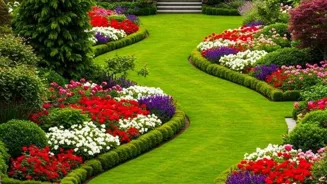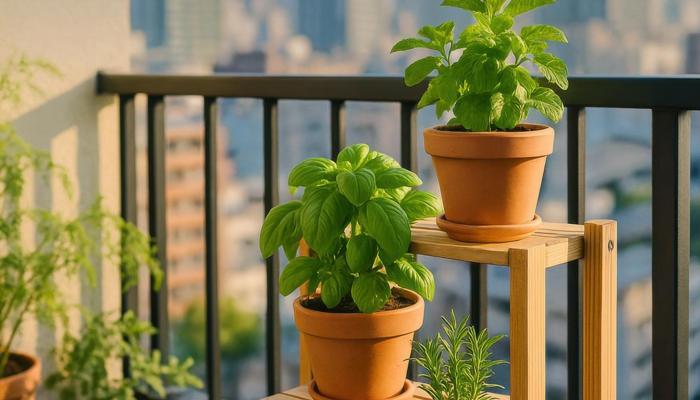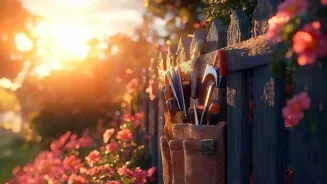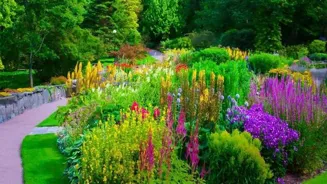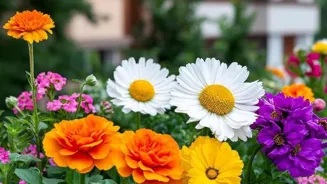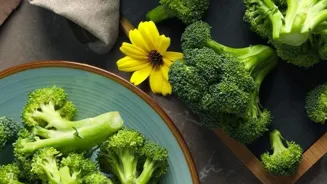Discover the 10 Essential Tips for a Stunning Home Garden! Read to unlock the secrets to a thriving garden paradise!
Home gardens are becoming increasingly popular in India, and with good reason! They offer
a slice of nature right at your doorstep, providing fresh air, a sense of calm, and even a supply of healthy fruits, vegetables, and flowers.
But maintaining a flourishing garden requires more than just a green thumb; it needs a bit of knowledge and consistent effort. So, whether you're a seasoned gardener or just starting out, here are 10 essential tips to help you create and maintain a beautiful and healthy home garden:
Soil is King (or Queen!): Know Your Ground
Before you even think about planting, understanding your soil is crucial. Is it sandy, clayey, or loamy? Sandy soil drains too quickly, clayey soil holds too much water, and loamy soil is the ideal balance. You can easily test your soil at home with a simple jar test (details available online!).
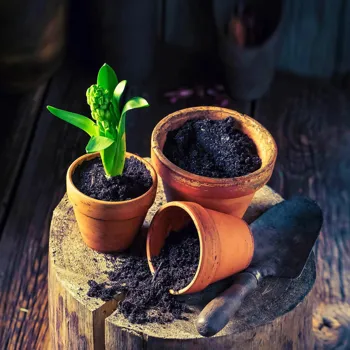
Once you know your soil type, you can amend it with organic matter like compost, manure, or leaf mold to improve its structure, drainage, and nutrient content. Adding organic matter also improves the soil's ability to retain water, which is especially important during the hot Indian summers.
Remember, healthy soil is the foundation of a healthy garden. Consider investing in a soil testing kit for a more accurate reading of the soil's pH and nutrient levels. This will help you tailor your fertilization strategy to your plants' specific needs.
Don't underestimate the power of good soil; it truly is the lifeblood of your garden.
Location, Location, Location! Understand Sunlight Needs
Different plants have different sunlight requirements. Some thrive in full sun (6-8 hours of direct sunlight per day), while others prefer partial shade (3-6 hours) or full shade (less than 3 hours). Observe how the sunlight falls in your garden throughout the day and choose plants accordingly.

Planting a sun-loving plant in a shady spot will result in stunted growth and poor flowering or fruiting. Conversely, planting a shade-loving plant in full sun can scorch its leaves. Group plants with similar sunlight needs together to make watering and maintenance easier.
If your garden has limited sunlight, consider growing vegetables like leafy greens (spinach, lettuce) and herbs that tolerate shade. Clever planning can transform even a small, shady space into a productive and beautiful garden. Remember, the right location is key to your plants' success.
Water Wisely: The Right Amount at the Right Time
Watering seems simple, but overwatering and underwatering are common mistakes. Water deeply and less frequently, rather than lightly and often. This encourages roots to grow deeper, making plants more drought-tolerant.
The best time to water is early morning or late evening to minimize water loss due to evaporation. Avoid watering the leaves, as this can encourage fungal diseases. Use a watering can or a soaker hose to deliver water directly to the roots.
Pay attention to the specific needs of your plants; some plants, like succulents, need very little water, while others, like tomatoes, need consistent moisture. Mulching around plants helps to retain moisture in the soil.
Observe your plants for signs of stress, such as wilting or yellowing leaves, and adjust your watering accordingly. Remember that each plant has different watering needs.
Feed Your Plants: The Importance of Fertilization
Just like us, plants need nutrients to grow strong and healthy. Fertilizers provide these essential nutrients. You can use organic fertilizers like compost, manure, bone meal, or neem cake, or chemical fertilizers, depending on your preference.
Organic fertilizers are slow-release and improve the soil structure, while chemical fertilizers provide nutrients quickly. Follow the instructions on the fertilizer package carefully to avoid over-fertilizing, which can damage your plants.
Consider using a balanced fertilizer (one with equal amounts of nitrogen, phosphorus, and potassium) for general use. For flowering plants, use a fertilizer that is higher in phosphorus to promote blooms.
Regularly feeding your plants will result in lush growth, abundant flowers, and delicious fruits and vegetables. Testing kits are available online and can provide information on the soil quality.
Weed Control: Keep the Unwanted Guests Away
Weeds compete with your plants for water, nutrients, and sunlight. Regular weeding is essential to keep your garden healthy. Remove weeds by hand, pulling them out from the root. Mulching helps to suppress weed growth by blocking sunlight.
You can use organic mulches like straw, wood chips, or shredded leaves. Avoid using herbicides unless absolutely necessary, as they can harm beneficial insects and contaminate the soil. Weeding after a rain shower is easier when the soil is loose, making it simpler to remove the entire root system.
Remember, a weed-free garden is a happy garden. Vigilant weeding is one of the most important aspects of all beautiful home gardens. Use your intuition to see if plants look healthy, or if their needs are being met.
Prune and Deadhead: Encourage Growth and Blooms
Pruning involves removing dead, diseased, or damaged branches to improve air circulation and encourage new growth. Deadheading is the removal of spent flowers to encourage the plant to produce more blooms. Prune flowering shrubs after they have finished blooming.
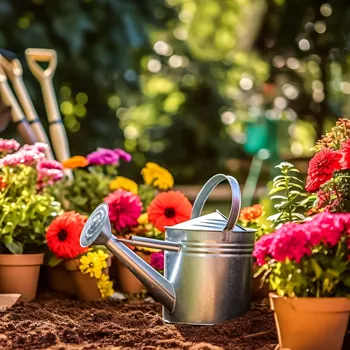
Regularly deadhead annual flowers to keep them blooming throughout the season. Use sharp, clean pruning shears or scissors to make clean cuts and prevent the spread of disease. Remove any suckers that grow from the base of the plant, as they can drain the plant's energy.
Pruning and deadheading not only keep your plants looking tidy but also promote healthy growth and abundant flowering. Understanding the specific pruning needs of each plant is important for maintaining a thriving garden. Learning more can help you take your garden to the next level.
Pest and Disease Control: Protect Your Garden from Threats
Pests and diseases can quickly ruin your garden. Regularly inspect your plants for signs of infestation or disease. Common pests include aphids, mealybugs, and spider mites. Common diseases include powdery mildew, leaf spot, and root rot.
Use organic pest control methods whenever possible, such as neem oil, insecticidal soap, or introducing beneficial insects like ladybugs. Ensure good air circulation around plants to prevent fungal diseases. Remove any diseased leaves or plants immediately to prevent the spread of infection.
Prevention is key; healthy plants are less susceptible to pests and diseases. A healthy plant is a happy plant.
Companion Planting: A Little Help from Your Friends
Companion planting involves planting different plants together that benefit each other. For example, planting basil near tomatoes can repel pests and improve their flavor. Marigolds can deter nematodes in the soil. Legumes like beans and peas can fix nitrogen in the soil, benefiting other plants.
Research which plants are good companions and incorporate them into your garden design. Companion planting is a natural and effective way to improve the health and productivity of your garden. Research thoroughly to see what goes well together.
Certain plants improve the taste or health of others when planted nearby.
Mulching: A Garden's Best Friend
Mulching involves covering the soil around your plants with a layer of organic matter like straw, wood chips, or shredded leaves. Mulch helps to retain moisture in the soil, suppress weed growth, and regulate soil temperature. It also adds nutrients to the soil as it decomposes.
Apply a 2-3 inch layer of mulch around your plants, keeping it away from the stems to prevent rotting. Mulching is an easy and effective way to improve the health and appearance of your garden. It also helps the earth.
Observe, Learn, and Adapt: Gardening is a Journey!
Gardening is a continuous learning process. Observe your plants regularly and pay attention to their needs. Experiment with different techniques and varieties to find what works best for your garden. Don't be afraid to make mistakes; they are part of the learning process.
Read books, articles, and blogs to expand your knowledge. Join a local gardening club or online forum to connect with other gardeners and share tips and advice. Remember, gardening is a journey, not a destination. Enjoy the process and celebrate your successes! A healthy garden is a journey.
By following these 10 essential tips, you can create and maintain a beautiful and healthy home garden that will bring you joy and satisfaction for years to come. Happy gardening!
AI Generated Content. Glance/InMobi shall have no liability for the content